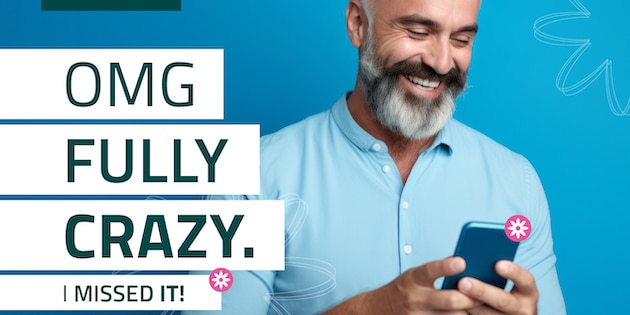Hashir Aazh: Patients’ evaluations of the effectiveness of treatments
Rehabilitation
In a survey of 200 patients of a NHS tinnitus & hyperacusis therapy specialist clinic, counselling was reported as the most effective treatment in helping patients to manage their tinnitus and hyperacusis.

As second most effective treatment was named education and cognitive behavioural therapy (CBT). Dr. Hashir Aazh from the Tinnitus & Hyperacusis Therapy Specialist Clinic, Audiology Department, Royal Surey County Hospital in Guildford, UK, talks about the work he and his colleagues undertook. This work will feature in Dr. Aazh’s presentation at the EUHA congress on Thursday 20 October, 2:25 – 2:50 pm.
Audiology departments in UK’s NHS play amajor role in offering therapy and supportfor patients experiencing tinnitus andhyperacusis. Recently, the American Academyof Otolaryngology – Head and Neck Surgery published aClinical Practice Guideline for Tinnitus (Tunkel et al, 2014).They recommend history taking, audiological examinations,education about management strategies, hearing aidevaluation and cognitive behavioural therapy (CBT). Soundtherapy was not recommended, but was suggested as anoptional treatment.
To the authors’ knowledge there is no widely agreedguideline developed for management of hyperacusis. A conference report suggests that various forms of counsellingand sound therapy seem beneficial in the management ofhyperacusis, but the evidence base for these remains poor(Aazh et al, 2014).
The Tinnitus & Hyperacusis Therapy Specialist Clinic (THTSC)at the Royal Surrey County Hospital (RSCH) is an audiologistledservice. THTSC offers a mixture of interventionscomprising: (1) education, (2) CBT, (3) hearing aids (4) soundtherapy, and (5) client-centred counselling. Although most ofthese tinnitus management interventions are included in theabove-mentioned guideline, the strength of their evidencebase is not equal. Evidence for the effectiveness of hearingaids and sound therapy for tinnitus is limited. Client-centred counselling for tinnitus/hyperacusis does not seem tohave any evidence base. However, the efficacy of CBT andeducation in tinnitus management has been established inprevious research (Martinez-Devesa et al, 2010).The aim of the present service evaluation study was toobtain patients’ feedback on the effectiveness of thetreatment they received for tinnitus and hyperacusis atTHTSC. The information was intended to complementresearch findings and guide the provision of care for patientswith tinnitus and hyperacusis.
Service evaluation
A survey questionnaire was sent to all patients who wereinitially seen between January and March, 2014 (n=200).The questionnaire included nine items assessing patients’opinions of the effectiveness of the therapies that theyreceived. Patients were asked to rate the effectiveness ofeach therapy on a scale from 1 to 5 (1=no effect, 5=veryeffective). They were instructed to leave the form blank ifthey had not received a specific therapy. The questionnaireitems were concerned with: (1) Hearing tests, (2) Completingthe tinnitus/hyperacusis questionnaires, (3) Education andinformation about tinnitus/hyperacusis, (4) Counselling, (5)CBT, (6) Bedside sound generator (SG), (7) Wideband noisegenerator (WNG), (8) Hearing aids, (9) Overall satisfactionwith the tinnitus/hyperacusis clinic. In addition, patientswere asked whether they had tinnitus (yes/no), hearingloss (yes/no) or hyperacusis (yes/no), and to specify the duration of their tinnitus. Patients were asked to return thequestionnaire within two weeks, using the pre-paid envelopeprovided.
A total of 92/200 questionnaires were returned, aresponse rate of 46%. The mean duration of tinnitus forthe responders was 10 years (SD=10). 96% (89/92) ofthe responders reported having tinnitus, 39% (36/92)reported having hyperacusis and 72% (66/92) had hearingloss. 48% of the responders (44/92) had received bedsideSGs, 64% (59/92) ear level devices (GN ReSound i-fits)incorporating a WNG and 60% (55/92) had received i-fitsincorporating amplification.
Effect of the treatments from the patients perspective
Each item on the questionnaire was rated as 4/5 or 5/5 (veryeffective) by over 50% of the responders. The mean scorewas greatest for counselling, followed by education, CBTand hearing tests. Only 6% of responders rated counsellingas 3/5 or below. This was followed by education, hearingtests, and CBT, which only 9%, 12% and 15% of respondersrated as 3/5 or below, respectively. This is in contrast withthe bedside SGs, hearing aids and WNGs, which 25%, 36%and 47% of responders rated as 3/5 or below, respectively(Figure 1).
There was no significant difference between the scoresfor education and counselling (p=0.06) or educationand CBT (p=0.24). However, scores for education were significantly greater than scores for WNGs (p<0.001)and hearing aids (p<0.001). Scores for counselling weresignificantly higher than scores for CBT (p<0.001), WNGs(p<0.001) and hearing aids (p<0.001), and scores for CBTwere significantly higher than scores for WNGs (p<0.001)and hearing aids (p<0.005). The scores for the bedsideSGs were lower, but not significantly so, than scores forcounselling (p=0.007), education (p=0.03) or CBT (p=0.06).A comparison of scores for responders with tinnitus only andthose with hyperacusis (with or without tinnitus) showed thatthere were no significant differences for education (p=0.32),counselling (p=0.14), CBT (p=0.05), bedside SGs (p=0.16),WNGs (p=0.29) or hearing aids (p=0.26).
Counselling CBT and education
Responders rated counselling, education and CBT as moreeffective than hearing aids and WNGs. This is consistent withprevious reports suggesting that CBT and education have astronger evidence base for the management of tinnitus andhyperacusis than sound therapy and hearing aids (Tunkelet al, 2014; Hesser et al, 2011). However, to the authors’knowledge no previous study has assessed the effectivenessof client-centred counselling in management of tinnitusand hyperacusis. Our study showed that client-centredcounselling was rated as slightly better than CBT and asmuch more effective than education. Although the GoodPractice Guide in the UK recommends that “all membersof teams working with patients with tinnitus need to becompetent in counselling and psychological support skills”(p.14, line 12), the document did not define exactly whatwas meant by counselling and psychological support. Thiscould range from providing reassurance and informationto the use of client-centred counselling skills. There is adiscrepancy between audiologists’ perception of counsellingand the client-centred counselling approach. In manyaudiology textbooks and research papers, counselling isdescribed as explaining and providing technical informationto the patient (English et al, 2000). However, in the contextof a client-centred approach, counselling is a process thatshould allow the patient, not the clinician, to talk abouttheir concerns and emotions (Rogers, 1962). A clinicalimplication is that audiologists may need further trainingin the application of counselling skills to help them in offering therapies for patients with tinnitus and hyperacusis.However, further research is needed to systematically assessthe effectiveness of client-centred counselling (as opposedto just listening sympathetically and giving advice to thepatient) in the management of tinnitus and hyperacusis.
Bedside SGs hearing aids and WNGs
More than 50% of the responders rated the bedsideSGs, hearing aids and WNGs as 4/5 or 5/5. However, assound therapy devices were always offered together withcounselling and education, it is not clear whether thehigh satisfaction of this 50% was directly related to theeffectiveness of the devices or to satisfaction with the overalltherapy. Between 20% and 46% of responders who foundeducation or counselling to be effective, rated the bedsideSGs, WNGs and hearing aids as 3/5 or below. This indicatesthat many patients who did not benefit from the SGs, hearingaids or WNGs still benefi ted from the educational and counselling components. However, almost all of the patientswho found SGs, WNGs and hearing aids to be effective, alsorated counselling or education as effective (4 or 5). Thismakes it difficult to determine whether the bedside SGs,hearing aids or WNGs were effective components of thetreatment package.



